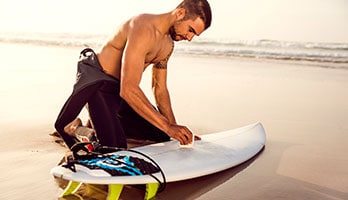
By acting like a protective layer on your surfing board, a surf wax not only helps your board to get proper traction in the water and but also assists you to get a stronger grip. A top-rated wax can make all the difference between staying on your board and being thrown off into the water, independent of the fact you are an amateur or an experienced surfer.
When it comes to the definition of the best surf wax, it is the unique combination of ease of application, affordability, and the formula. Even after going through surf wax reviews, you might not have a clear answer. Thankfully, we’ve compiled the 10 best surf wax the market offers that will help you make an easier decision. Once you have made up your mind, all that’s left for you is to ride those waves!
OUR TOP PICK
Mr. Zogs Original Sex Wax
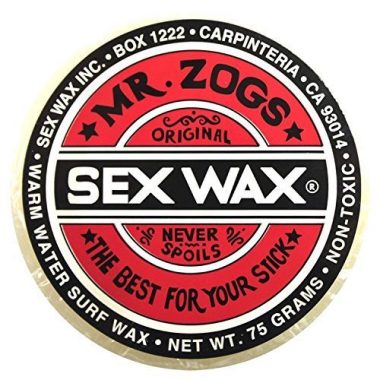
- Stand Out Features - Why We Love It
- 4 different scents available, Coconut, Strawberry, Grape, and Pineapple
- Available in four water temperatures; Cold, Cool, Warm, and Tropical
- An iconic American brand
- It can be used for both base and top coats
- It can be used on surfboards, drums, and hockey sticks
Best For: Warm waters
Weight: 0.3 Ounces
EDITORS CHOICE
Mr. Zog’s Sex Wax Quick Humps
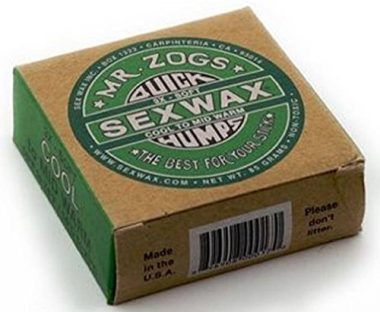
- Stand Out Features - Why We Love It
- Designed for cool to warm climates
- An iconic American brand
- Gives great traction
- Orange, purple, yellow, and multicolored options
- Comes packaged in a recyclable paperboard boxes
Best For: Cool waters
Weight: 0.6 ounces
BEST VALUE
Sticky Bumps Original Board Wax
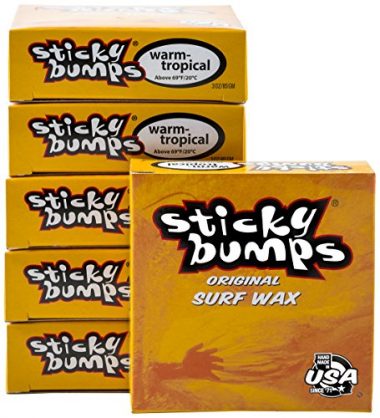
- Stand Out Features - Why We Love It
- Perfected snag and grab technology since 1992
- Biodegradable and emulsifies in the water
- Environmentally-friendly packaging
- Non-toxic surf bar made by surfers
- It can be used above 69 degrees Fahrenheit
Best For: Warm waters
Weight: 80 grams
Double Barrel Surf Wax
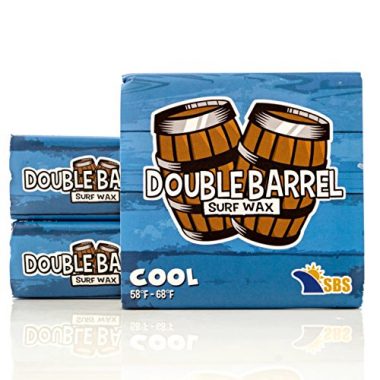
- Stand Out Features - Why We Love It
- Ideal for usage in cool water
- Has an addictive Coconut smell
- Provides good traction even in harsh conditions
- It doesn't affect the ocean's Ph. balance
- Hand made in California
Best For: Cool waters
Weight: 1.2 pounds
Matuna’s Surf Wax
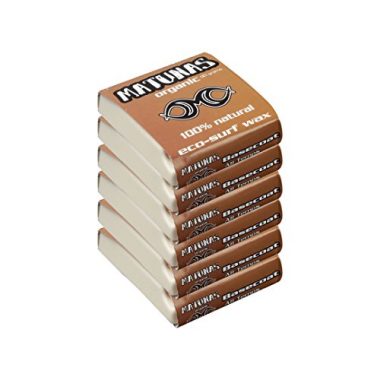
- Stand Out Features - Why We Love It
- Comes packed in 6
- Biodegradable, petroleum-free, synthetic chemicals-free
- The package is made on recycled paper with soy ink
- Made using local ingredients from a farm in California
- Available in cold, cool, tropical, and warm waters
Best For: Base coat
Weight: 1.2 pounds
Outdoor Wax Works
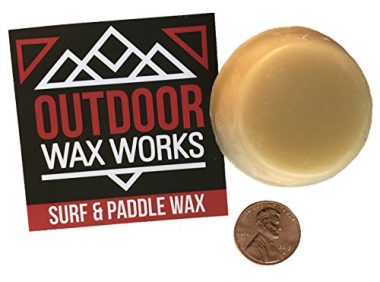
- Stand Out Features - Why We Love It
- It has been designed for a wide range of temperatures
- Wide temperature range
- No additives including scents
- Used for traction, to keep your feet stuck to the surfboard deck
- 100% natural formula makes it effective in all climates
Best For: Cold waters
Weight: 2.1 ounces
Mrs. Palmers Tropical Surfboard Wax
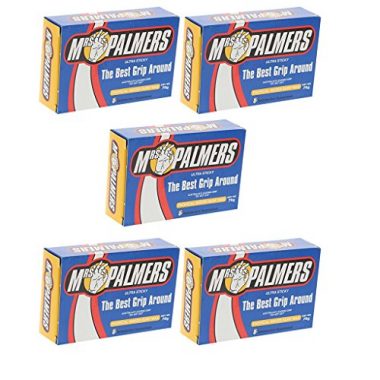
- Stand Out Features - Why We Love It
- Designed for water temperature above 75 degrees
- Has an ultra-sticky formula
- Specifically manufactured for tropical climates
- Made in Australia
- It doesn't wear out in the water
Best For: Tropical waters
Weight per bar: 70 grams
Bubble Gum Wax
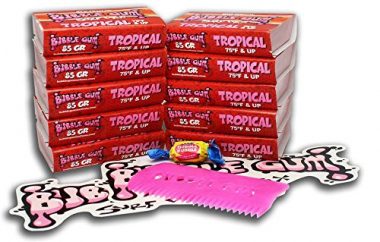
- Stand Out Features - Why We Love It
- It has a bubble gum scent
- A wax comb is included in the package
- There are 4 temperatures available
- Used by the top surfers all over the world
- Made in California
Best For: All waters
Weight: 85 grams
Famous Green Label Cool Wax
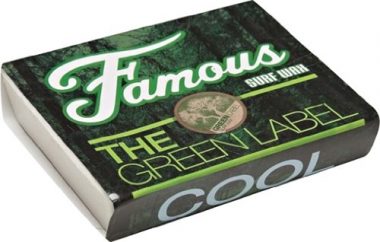
- Stand Out Features - Why We Love It
- Recommended for use in cool waters
- Easy to apply and smells great
- Green Label features recycled FSC certified packaging
- Non-toxic, biodegradable, all-natural
- Free of oil so it does not work well if put on top of or mixed with other petroleum-based surf wax
Best For: Cool waters
Weight: 0.2 ounces
Sticky Bumps Hawaiian Wax
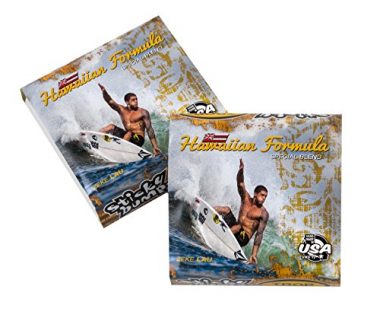
- Stand Out Features - Why We Love It
- Use Sticky Bumps basecoat under any of the brand's temperature-specific waxes
- Pina Colada Scent
- Non-Toxic, Biodegradable, All-Natural
- A special blend for extra hot water 80°F/26°C and above
- Long-lasting and easy to apply formula.
Best For: Warm waters
Weight: 85 grams
How To Choose a Surf Wax – Buying Guide
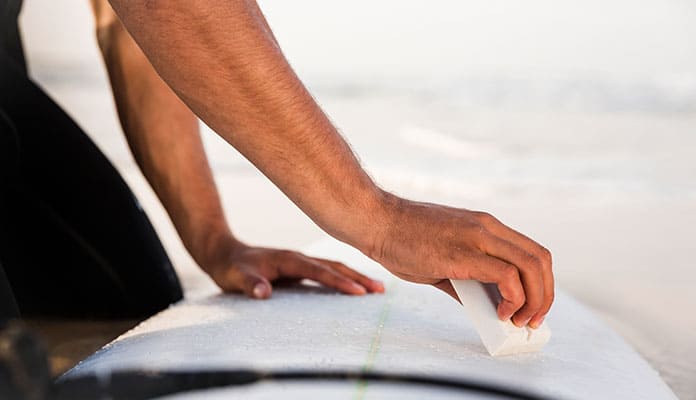
Climate and Surf Wax Temperature
Looking for the best surfboard wax? Choosing the correct wax for your climate can be the difference between staying on your board and falling off of it. Most wax surfboards are designed to be used in particular water temperatures. There is nothing worse than applying the wrong wax in a hot environment to see it melt off right before your eyes. The best surfing wax is the one that is fit for your particular needs. There are 4 main categories of surfboard waxes, and each works better in different climates:
- Tropical: If you will be surfing 75 degrees and above, you need this type. Ability to withstand hotter temperatures, tropical waxes are harder in texture and do not melt away even directly exposed to sunlight.
- Warm: If you will be surfing 64-74 degrees, then this is your type. For maximum traction, follow the brand’s instructions strictly.
- Cool: Will you be surfing 58-68 degrees; you have to go with cool wax. Remember, it doesn’t hold up well once the temperatures start to rise.
- Cold: If you will be surfing 60 degrees or below, you have to use a cold water-wax. With this one, storage is important to prevent it from melting if exposed to higher temperatures.
Basecoat Vs. Top Coat
There are two main types of wax: a basecoat wax and a top coat wax. A basecoat wax is a hard wax that doesn’t melt off and provides a base layer for your main wax. When you apply it to your board, it provides a foundation layer. This layer is thick, hard, and has the ability to hold up even in hotter temperatures.
The topcoat on the other hand is applied after your basecoat. It is a thinner layer of wax that provides a lot of the grip on your board. Compared to the basecoat, it is a softer and stickier wax. This is the layer that provides your man grip on the board. As it is thinner in nature, it has the tendency to melt easier. Once you have your basecoat on the board, you should not have to apply it very often, but you will need to use it on your topcoat more often.
Type Of Wax
Depending on how you surf, you may want to choose between traditional surfing wax and sticky wax. Traditional wax is harder and not as sticky in nature. It creates small clumps of wax which provides traction for your feet. Sticky wax is, well, stickier. It is a soft and tacky wax that gives you more grip, but you get more on your feet. Sticky surfing wax, on the other hand, is suitable for new boards or boards which have recently been stripped and those without any traction pads.
You might also like: Top Surfboard Travel Bag
Ingredients
The ingredients are essential in any product, but especially so when you are in the water. You want your wax to be safe for the water. If the wax comes off your board, then you do not want it to pollute the water. We always recommend the best surf wax that consists of natural ingredients over one that has a lot of chemicals in it.
Waxing Tips
Take a look at the below tips we have compiled for you in order to get your surfboard waxing right:
- First, start with a diagonal pattern going in one direction. Continue down the riding surface of your board. Try to make the lines within an inch of each other. Once completed, this time start making diagonal lines going in the opposite direction. This is called the crosshatching.
- Begin to rub your board in small circular motions in order to get a strong foundation and topcoat. Don’t stop until you see raised bumps across the riding area.
- Make sure you only wax the areas your feet touch so that you have the proper traction where you need it.
- For the optimal balance, use hard wax for the basecoat especially if you’ll be surfing in tropical waters.
- Wax your board when the board has lost its traction. You don’t have to clean your board after every surfing session.
- It is ironic that the more wax you put on your board, the more slippery the surface gets. Therefore, it is crucial to apply the wax in the right pressure to form a strong foundation.
- If you follow the above points, you will soon bump on your board. If you don’t, keep waxing. It is OK not to get it right straight away, you’ll be a pro after a few sessions.
- Some surfers give a light rub before each session. This provides extra protection.
- Keep on trying different types of wax until you find your own optimal brand. We are sure that one of the brands we have reviewed here will the right wax for your board.
FAQs
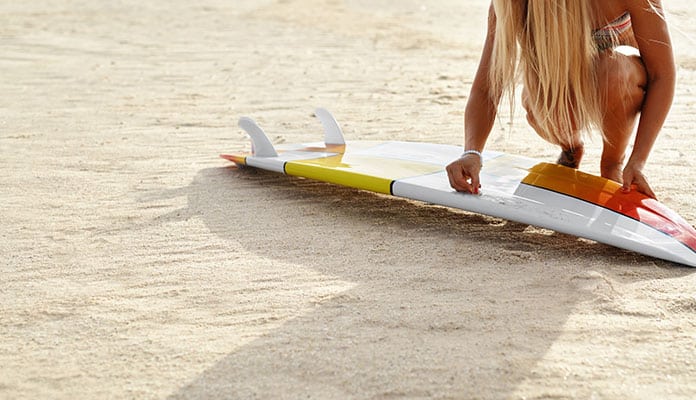
Q: How Do I Wax My Surfboard?
Putting wax on your surfboard is a relatively straightforward process. Here are the steps:
- Make sure that your board is clean. A quick wash and dry will make the application easier, and you will avoid getting dirt in your wax and on your board.
- If you are applying wax for the very first time, you should use a base coat first.
- When you begin to apply your wax, you should rub the wax in small circles. This helps to create small bumps on the board, which will give you a better grip. Once you have a layer of small bumps, you can rub the wax in any direction.
- Try out your surfboard and add more wax next time if you need to.
Q: When Should You Add More Wax To Your Surfboard?
When you start to feel yourself slipping on your board, it is time to add more wax. More wax will give you more hold, but you should also be careful when adding. The more wax you have on your board, the heavier your board gets. This can change the way you surf. More wax can also accumulate more dirt and grime. If you have a lot of wax on your board and are not feeling traction, it might be time to remove it and start again.
Q: When Should You Remove Your Wax?
When you have too much wax on your board and have lost traction, it is time to remove the wax. If any work needs to be done to your board, you should remove the wax, as well. Take some warm sand and rub it over your board. The coarseness of the sand will remove the layer of wax from your board.
Q: Should I Use A Base Coat For My Surfboard?
That depends on if you want to. There are two main reasons for using a base coat. The first is that you will need to use less of the topcoat. The other purpose is that it helps to create the small bumps required for traction.
Q: When Should I Use A Wax Comb?
If you have a lot of wax on your board and are not getting the traction you need; you can use a wax comb as an alternative to removing the wax and applying a new layer. A wax comb digs through the wax and creates the small bumps needed to give you traction.
Globo Surf Overview
Surfing takes practice and dedication. It is not all about getting out there and riding the waves. You need to be prepared before stepping foot in the water. Waxing your board is something that you should be doing regularly. Great surf wax is a must-have accessory for any surfer, beginner or professional. Hopefully, one of the waxes from our list is the one you are looking for.

